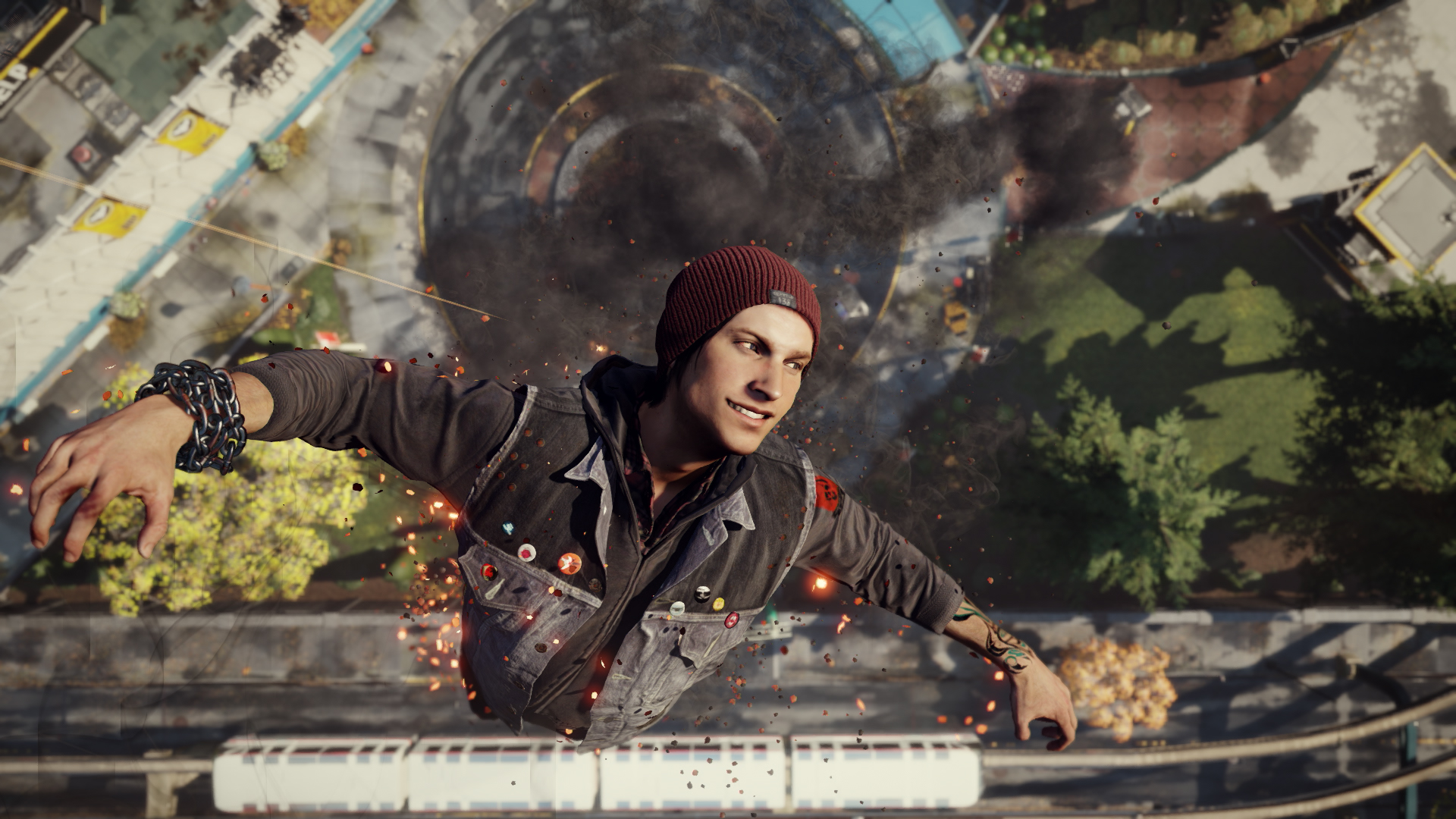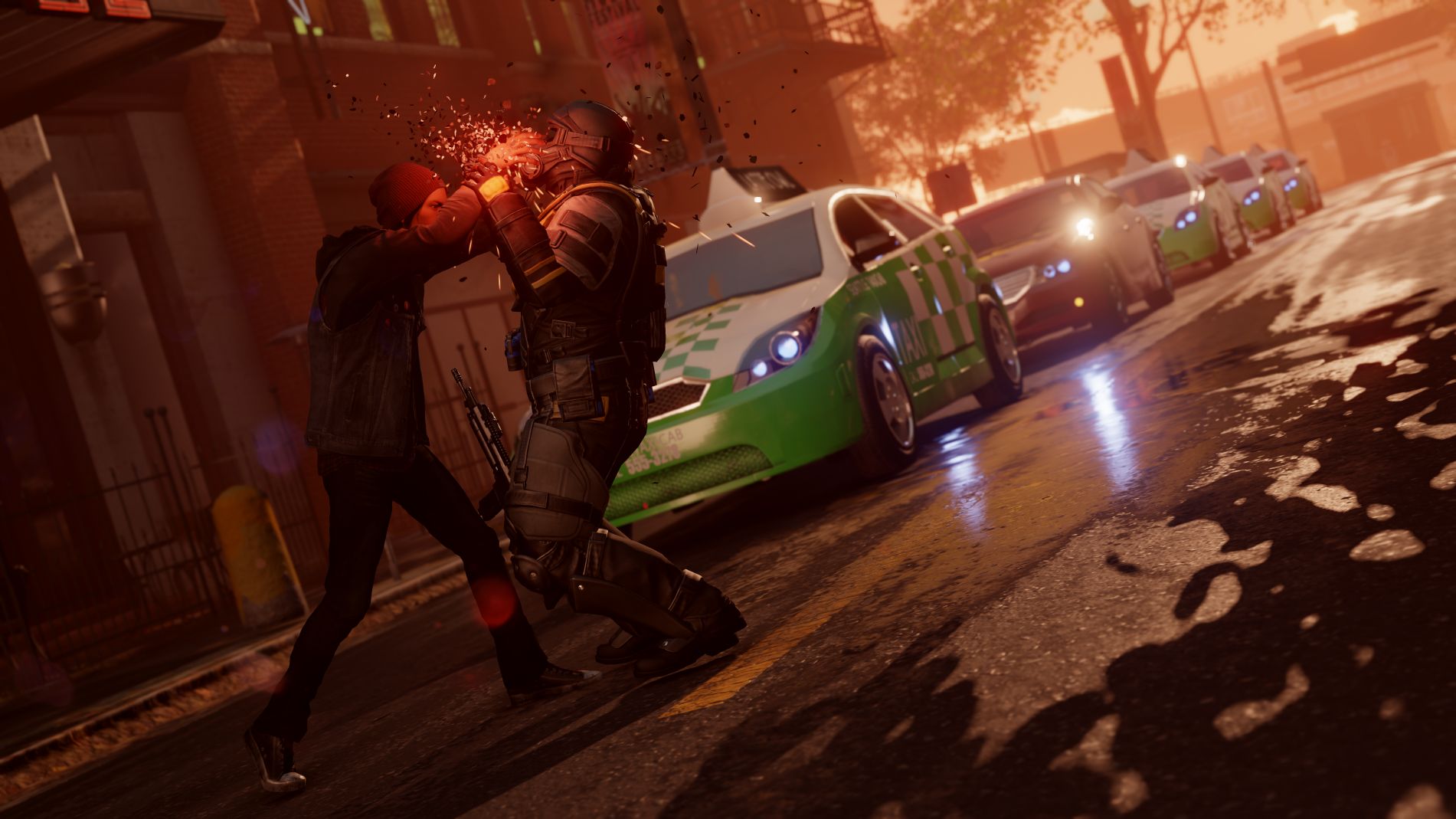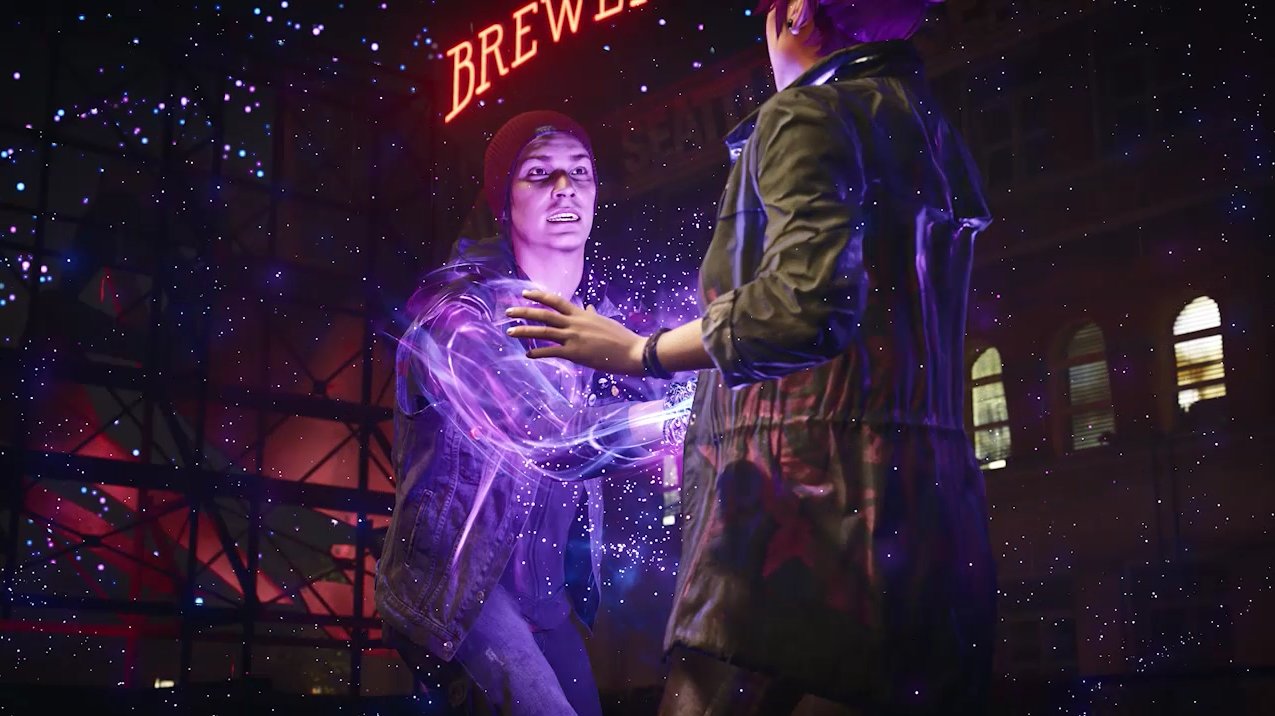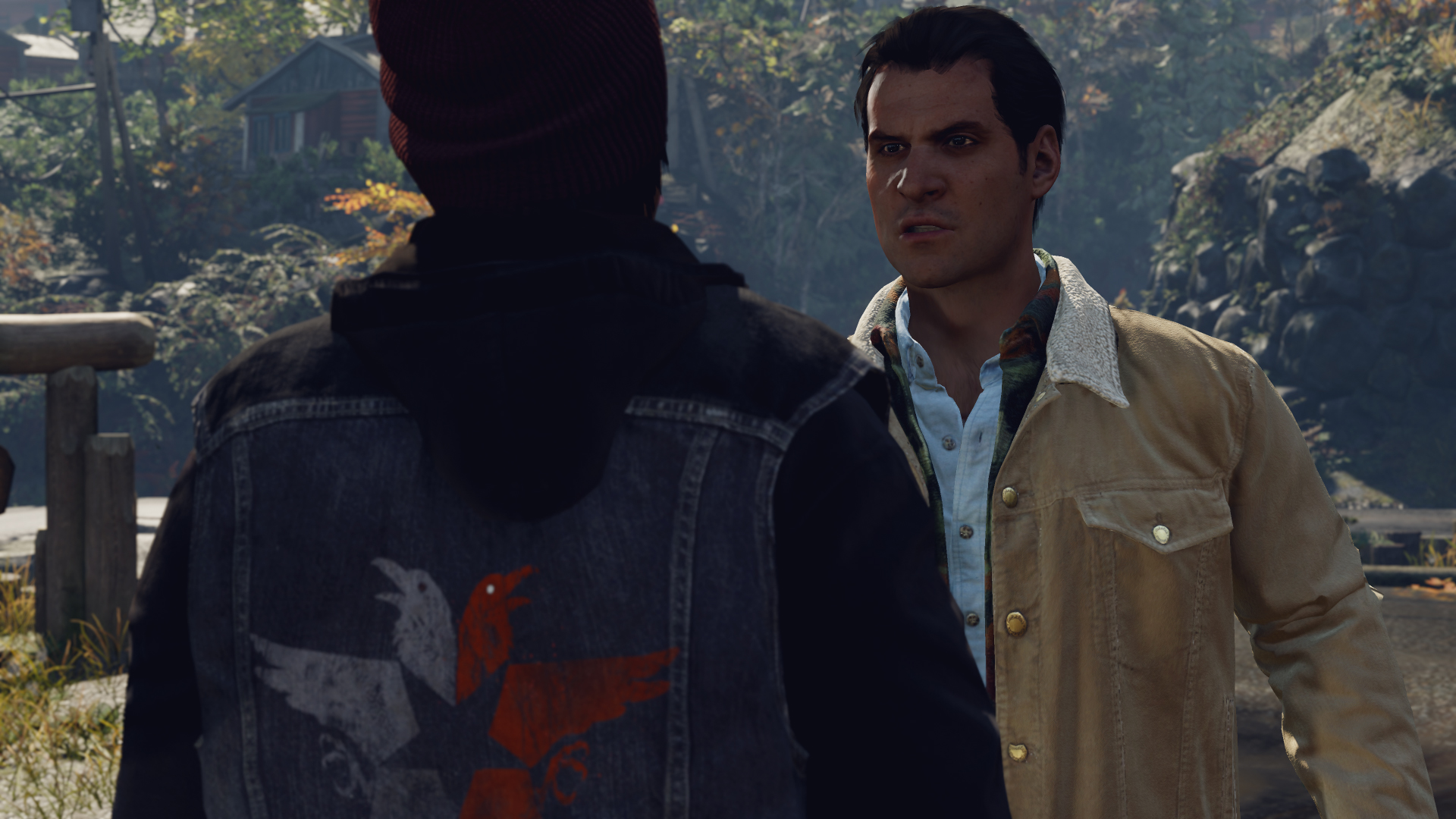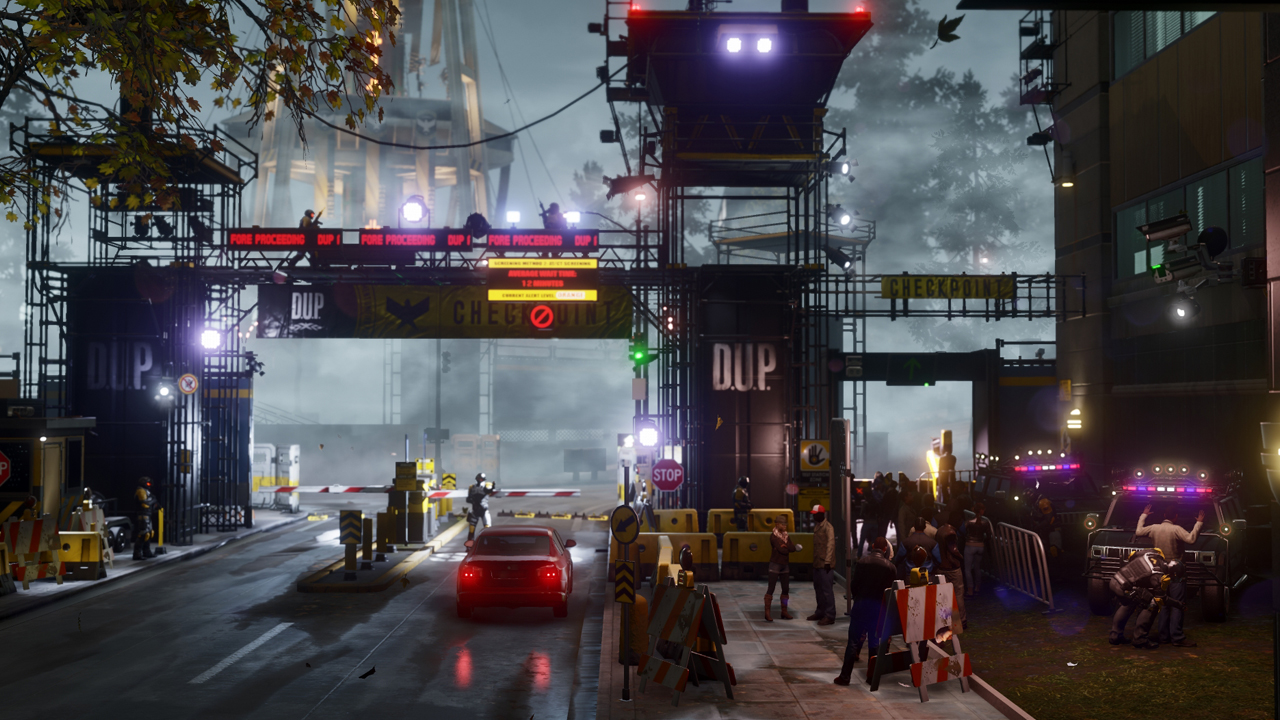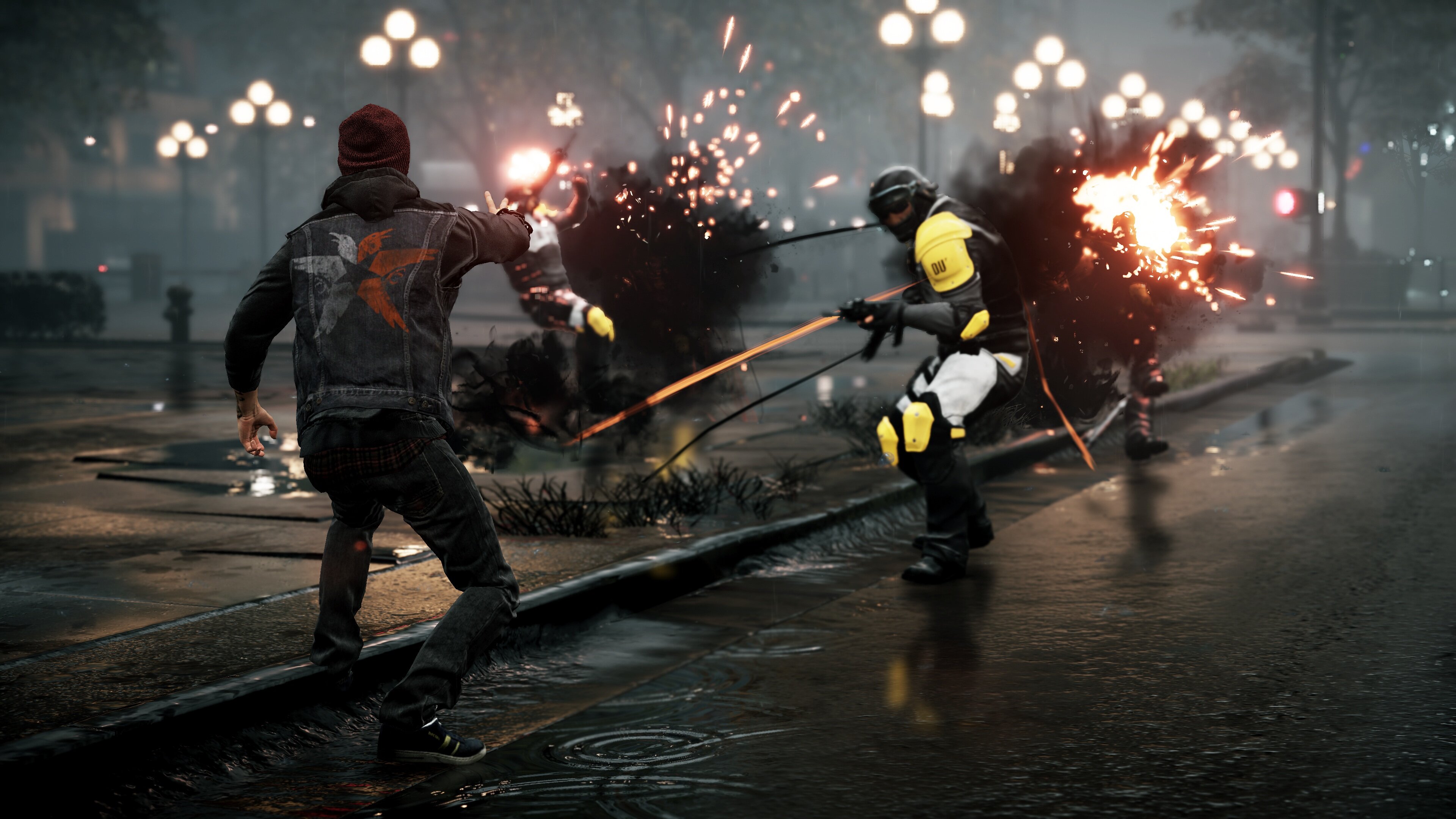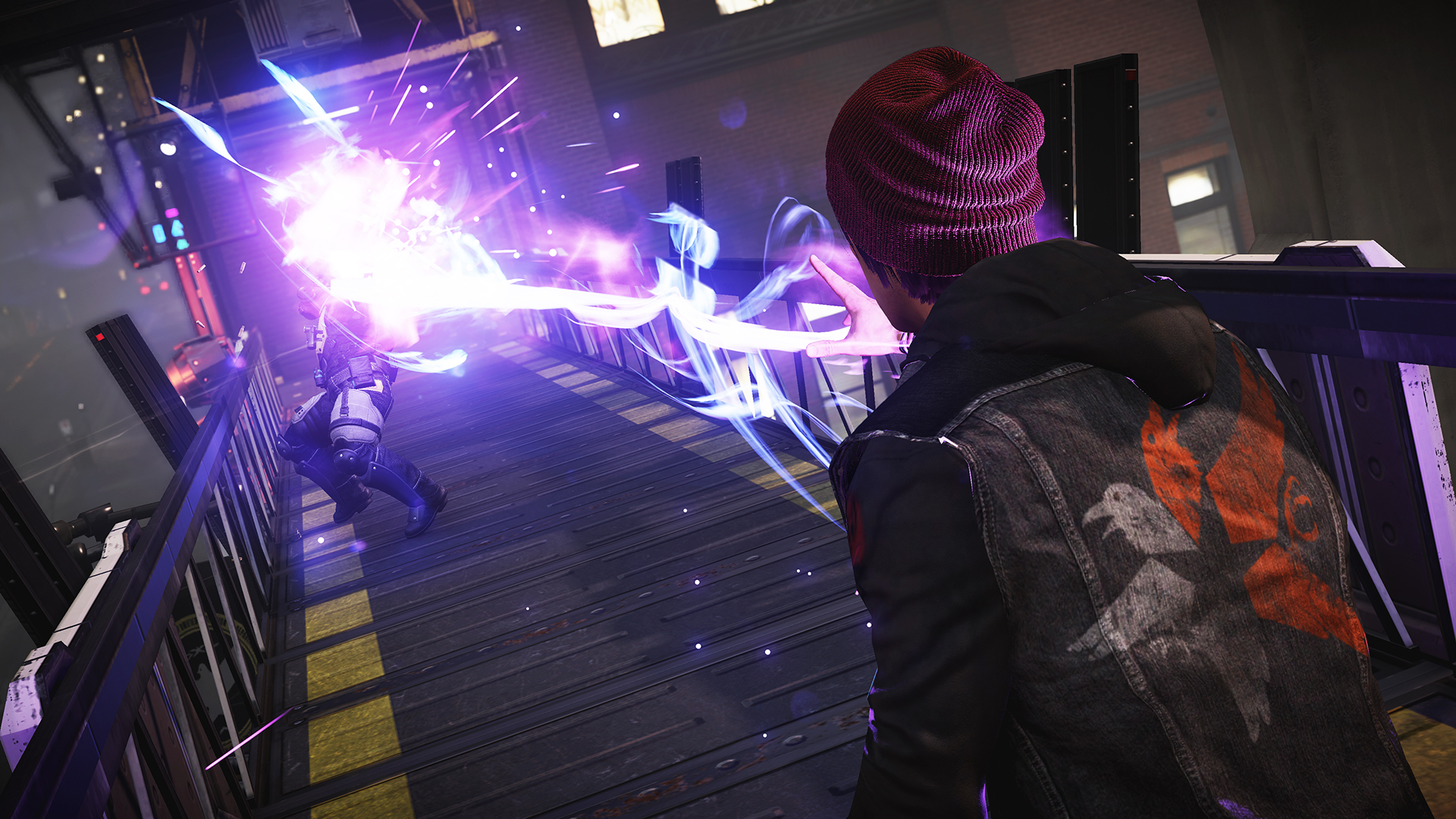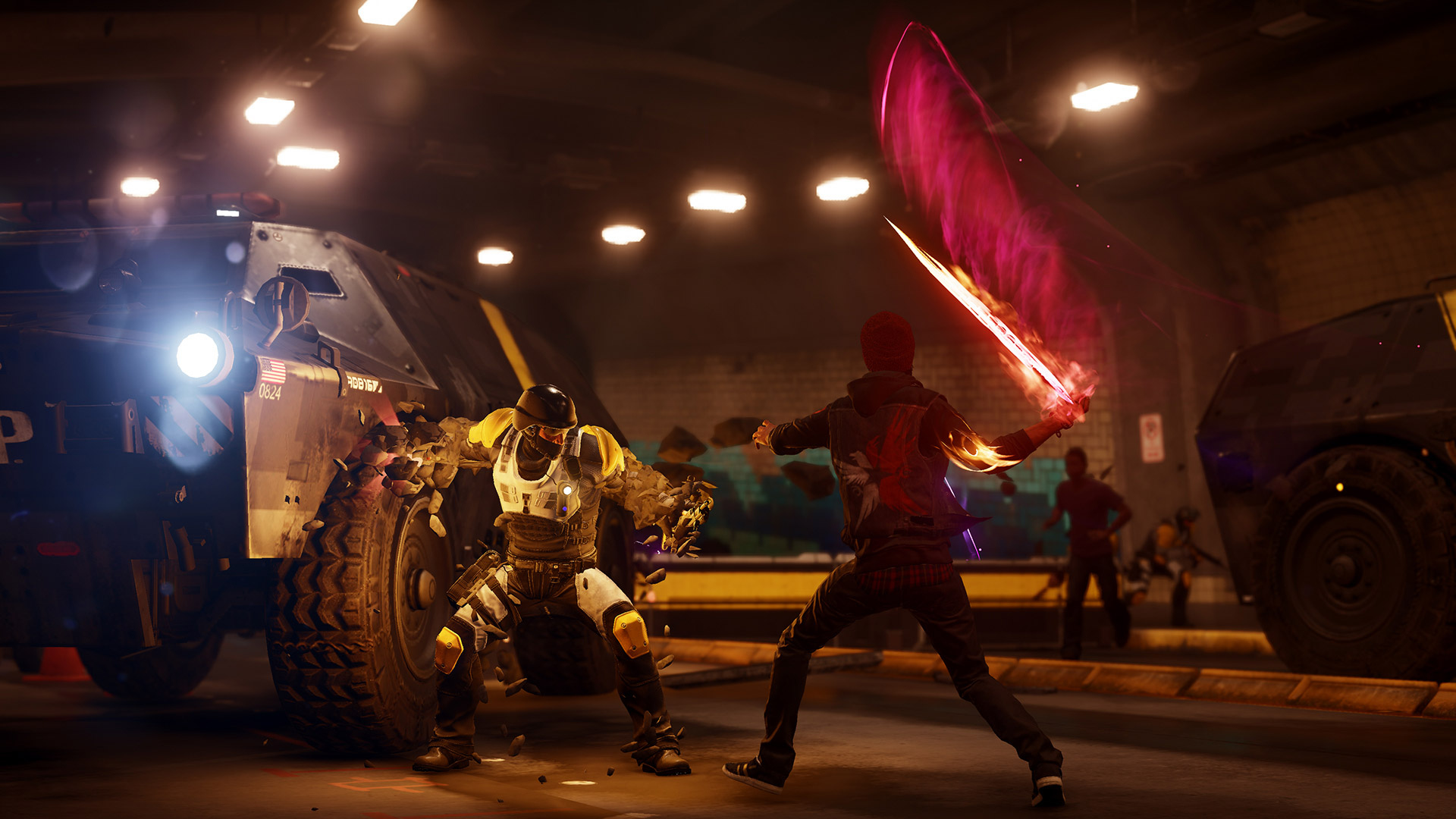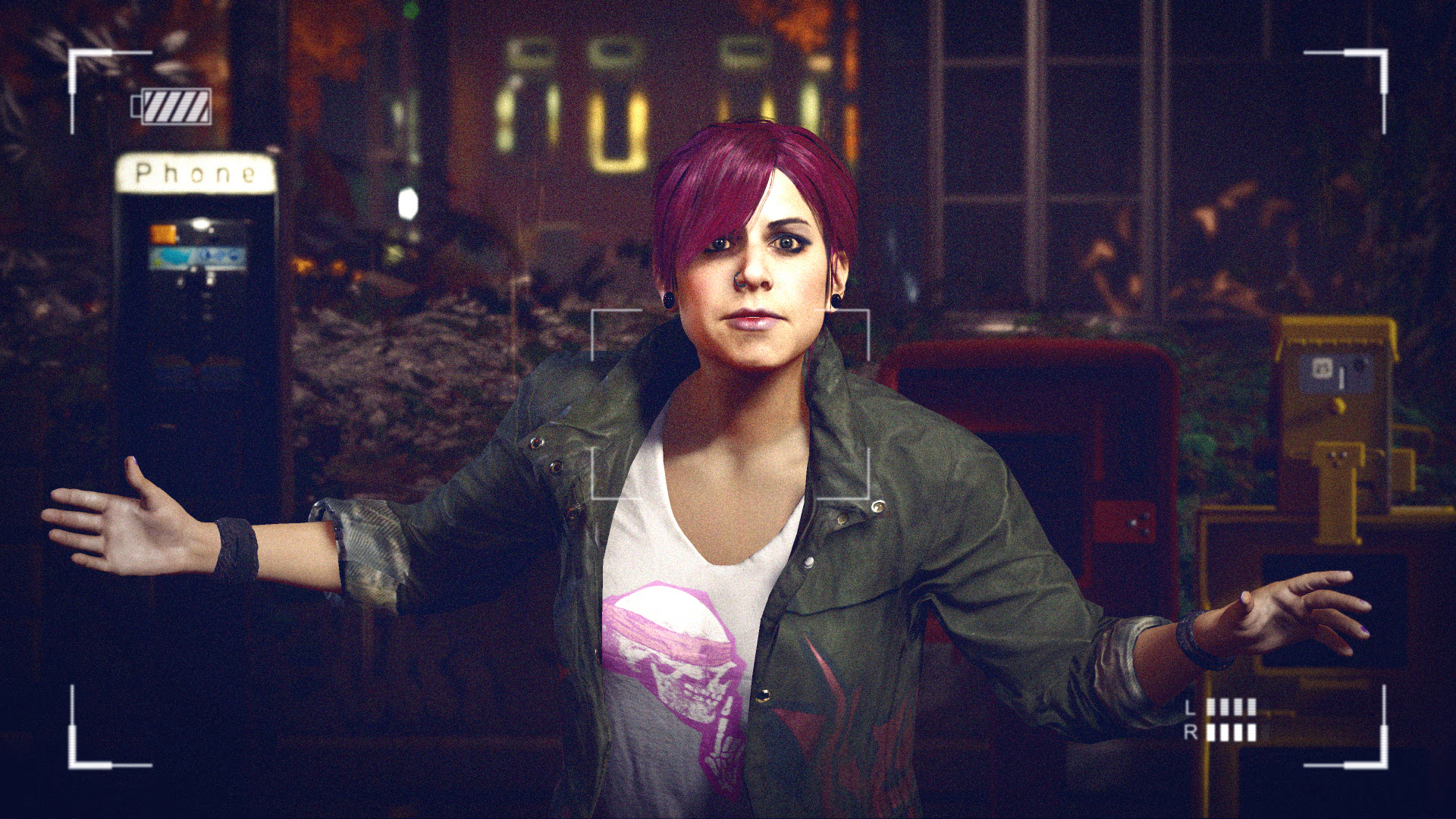Infamous: Second Son is less a sequel to its PS3 predecessors, and more of a spiritual successor that maintains the series’ name. Much of the elements that made the former games enjoyable and action-packed are still present, but with a new main character, a new real-world setting and a whole new arsenal of superpowers and mechanics, the series attempts to elevate the experience as much as it can for its upgrade to PS4.
It largely succeeds in this endeavour as well! Infamous: Second Son narrowly edges out Killzone: Shadow Fall as the PS4’s best exclusive for the launch window. It’s currently the ideal exclusive game to pick up alongside a new purchase of the console, if you plan to adopt a PS4 sooner rather than later.
In fact, the game provides so much enjoyment that gamers will likely wish there was more of it. Infamous: Second Son is shorter and contains less content than the previous PS3 titles unfortunately, even with the obligatory minimum two playthroughs that are necessary to snag the game’s Platinum Trophy. On that note, the series’ binary moral choice system feels more aged and redundant than ever as part of a shiny new PS4 experience, especially when you’re effectively locked out of the opposite moral path, given how much Infamous: Second Son restricts your Karma Meter right from your first choice in one direction or the other.
In the end however, it’s difficult to argue with a game that’s as much carefree fun as this one. Infamous: Second Son very effectively balances feeling simultaneously familiar and fresh for Sucker Punch’s super-powered sandbox series, while also flexing the PS4’s technical muscle to create an immersive and addictive experience. All in all, even with the smaller package, it’s a very promising indication of great things to come for Sony’s new next-generation console!
Infamous: Second Son rivals Knack as the PS4’s top technical showcase at this point. The graphics are unbelievably gorgeous, and a noticeable class above what has come to be expected of the PS3.
The character models animate in a more life-like and believable fashion than ever to start, with new player character, Delsin Rowe looking particularly stunning. Key supporting characters and villains also have highly detailed models that move and emote with incredible authenticity, shedding the series’ former comic book-themed style for a more realistic, immersive look. It’s definitely a stylistic departure from the PS3 games, but still a great one!
Whether examined up close or in motion, Infamous: Second Son’s outstanding visuals show few blemishes as well. There are times where Delsin’s hands may clip through a building while he’s climbing for example, but it’s difficult to care when the rest of the game looks so incredible.
Wielding your vast array of powers is a particular delight that’s enhanced all the more by how superb they all look. The PS4’s panache for excellent particle effects and lighting, which was already put on wonderful display with Knack, is put to even better use here, with puffs of smoke and blasts of concrete, among other things, continually flying around like a gritty fireworks show. When playing with Evil Karma, you’ll soon get to watch all of your victims burst into particles of light and ash as well, which makes every kill feel incredibly empowering, and virtually intoxicating!
As Delsin expands his suite of powers, you’ll also gain the ability to dash around in bursts of light, distort the fabric of reality with video manifestation, and more! All of it looks incredible, and all of it leaves the former PS3 games completely in the visual dust, allowing every ability to really pop off the screen in a way that’s never been so effectively done in a superhero-style game before.
The setting of Seattle itself is as much a star in Infamous: Second Son as Delsin and his foes’ many abilities too. Whether slick with rain, drenched with sun, or blanketed in night, Seattle is a frequently dynamic and appealing setting, and never has a real-world sandbox environment been rendered as well as it has here. The increased power of the PS4 allows Seattle to be consistently packed with citizens, each with unique dialogue depending on your Karma alignment, and full of all sorts of incredible atmospheric detail that gives each district of the city its own style and identity. The painstaking amount of detail that has gone into making a believable virtual Seattle is just staggering, especially when it turned out this well!
Given that Infamous: Second Son really pushes the PS4 to generate these kinds of visuals, you can imagine that the framerate is occasionally taxed, and yes, it occasionally is. While the game is generally pretty good at staying smooth even during a heated super-powered scrap with many enemies and vehicles, there are times, especially when you use Delsin’s screen-clearing Orbital Drop attacks, where slowdown and framerate hiccups will occur. It’s not common enough to be a nuisance, but it can be annoying when the game decides to chug seemingly at random, and you’re trying to dash away from an imminent death around tons of enemies with pitch-perfect precision.
If you want to impress your friends with the mighty graphical horsepower of the PS4 however, and don’t want to rely on the kid-friendly (and not so great) Knack to do it, Infamous: Second Son is the console’s prize pony at this point.
Infamous: Second Son’s understated music continues to be mostly buried behind highly-pronounced super-powered destruction, but if it’s any comfort, the sound effects are better than ever here!
Just as painstaking effort was put into visually realizing the real-world setting of Seattle, the same is true of audio effects, which attempt greater realism and immersion in contrast to the more stylized effects of the series’ prior PS3 games. There’s still a few effects that are just meant to sound cool, namely the Comet Drop that you can perform by leaping off a tall building and holding the Square Button, but for the most part, even super-powered scraps sound true-to-life. As much as they can anyway.
It’s extra satisfying to hurl plumes of smoke into an enemy’s face when they burst with thick, pronounced satisfaction, just as dashing around as a neon figure feels especially fun as you hear the sharp electric surge following you everywhere you go. The concrete powers that your enemies wield also sound just as well-realized and destructive, helping to compensate a bit for the less punchy gun effects. The eruption, shattering and impact of concrete projectiles and shields only further adds to the immense power that these characters all wield against one another, to outstanding effect!
Voice acting is also excellent all-around, with each character having tons of personality and conviction behind every word they say. Video game acting regular, Troy Baker is a particular standout, doing both the voice and motion-capture for Delsin Rowe, adding much more personality and flavour to a protagonist that feels more multi-dimensional than the somewhat bland Cole MacGrath from the previous PS3 games, regardless of your moral path. Whether heroic or infamous, Baker makes Delsin come to effective life with a bold attitude and plenty of amusing dialogue.
Infamous: Second Son is packed with great characters in general beyond Delsin as well, and the chemistry of the voice actors is all felt in many great scenes throughout the game. It may be the might and destruction behind the game’s actual superpowers that serve as an audio highlight, but it all comes together thanks to the personalities being realized as well as the concept and setting.
Like the previous PS3 games, Infamous: Second Son puts you in control of a super-powered character, unleashed on a large open-world city. Given incredible powers, do you redeem the reputation of super-powered individuals by performing acts of heroism and inspiring the people? Or, do you spread terror and violence in using your powers to take control?
While this core concept behind the series in general remains the same, gone is the original application of Cole MacGrath and his electric powers. With new player character, Delsin Rowe having the ability to absorb and develop powers from other super-powered people, or Conduits (now re-christened, “Bio-Terrorists” by the frightened populace), players gain a variety of means not only to attack, but also to navigate, heal and perform other specialized actions.
At the start however, Delsin will only have dominion over smoke. During the early establishment and right up to your first minutes in Seattle, this already gradually gives you a flexible array of abilities, as you can fire smoke shots, disorient and stun foes with smoke bombs and smoke clouds, dash through air vents to burst out of chimneys, absorb smoke from wrecked cars and smokestacks to heal and recharge your attacks, and teleport a short distance via a smoking dash maneuver.
As you collect Blast Shards, a city-wide collectible that should be quite familiar to returning Infamous fans, you can give Delsin even more smoke powers and related upgrades as well. Rather than simply expand how much power you can store, Blast Shards now act as a general currency to unlock power upgrades in the game menu, and unlike previous games, any available Blast Shards now show up in the game’s minimap right from the start, allowing you to hunt them at your leisure.
Delsin may be a speedier and more clever character than the more offense-based Cole MacGrath, though he also compensates by being slightly weaker and easier to kill, despite having a healing factor that now allows him to recover damage naturally if he just avoids being hurt for a short time, rather than having to absorb electricity to heal like Cole did in the PS3 games. This fundamentally changes combat, as it encourages players to be more strategic and smart when it comes to taking down enemies, many of which outclass Delsin in terms of raw power.
This helps Infamous: Second Son further stand apart from its predecessors, in a good way. It can be immensely satisfying to zip through an enemy compound, pick off a foe or two with a sneak attack, and then dash through an air vent to resume your assault from the air, moving around and taking out enemy forces carefully. Mastering the many applications of your powers is paramount, but when you do, Infamous: Second Son truly satisfies in just how flexible and tricky it makes its new protagonist.
Things only get better when you move beyond smoke powers too. Not long into the game for example, Delsin will gain the ability to absorb neon energy, allowing him to power up from glowing signs and decorations, and giving him super-speed, as well as the ability to fire beams of glowing energy and instantly incapacitate foes by highlighting weak points. Spending more Blast Shards will continue to take these powers beyond their basic fundamentals as well.
One thing that players may notice is that Infamous: Second Son almost has more in common with Activision’s once-competing Prototype series than the actual preceding Infamous games on PS3. The climbing in Infamous: Second Son feels sloppier and less precise for example, but it compensates with a lot of powers that let you zip up buildings and quickly leap and hover all around Seattle in a matter of minutes. The increased flexibility and divisions of your powers also call back to Prototype moreso than the previous Infamous games as well.
Some of these powers vary depending on your moral path, but not quite as much as Cole’s powers did unfortunately. The most noticeable example is Good Karma allowing you to slow down time with your neon powers, letting you better non-lethally subdue enemies, while Evil Karma allows you to fire energy more quickly and violently for example. The slight variation is appreciated, but it’s very rare compared to the PS3 games.
In fact, this is yet another reason why the obligatory moral choice element feels more tiresome than ever in Infamous: Second Son. At least the game simply asks you at the start whether you want to be good or evil, a courtesy that the PS3 games might as well have offered, but like before, you pretty much have to commit to a single moral path, with no real flexibility, if you want a reliable suite of powers. The handful of Karma-based missions lock out the opposite path, and the handful of Karma-based powers are immediately locked whenever you shift in the opposite direction. It feels extremely arbitrary at this point, and little more than a cheap ploy to get you to play through the game twice to see everything.
That said however, it could be worse, as Infamous: Second Son shouldn’t take you longer than eight or so hours to complete if you don’t get too bogged down in collectibles, side tasks and trophy hunting, even on Expert difficulty. Snagging the Platinum Trophy is also not that tough a task if you’re willing to play through the game twice, and at least once on Expert, with 100% completion probably not taking more than twenty hours, maximum. This is especially true when you consider that all collectibles and special tasks are highlighted on your minimap right from the get-go, with no unlocking necessary.
Sure, the game is fun, but compared to the PS3 games, the overall package feels frustratingly small at times, especially given how many other efforts Infamous: Second Son has made to upgrade the experience for PS4.
Even then however, the many ideas behind Infamous: Second Son offer a promising continuation and evolution of what the PS3 games started. The key side task of driving the antagonistic D.U.P. (Department of Unified Protection) army out of Seattle is fun and rewarding, allowing you to take down command centers, security checkpoints, spies, and even destroy both hidden and obvious cameras to gradually weaken their influence in each district of the city.
Even collecting Blast Shards and spraying graffiti, which is done by turning the controller on its side, shaking it and spraying with the R2 Button and the controller’s tilt sensors (gimmicky, but clever), all serve toward a declining percentage of D.U.P. control. This culminates in a ‘Showdown’ mission where you fight a wave of enemies to drive them out of a district permanently. It’s cleverly implemented, and serves narrative as well as it does gameplay.
When all is said and done however, Infamous: Second Son, fun and entertaining as the gameplay is, still has the aftertaste of being a launch window title for the PS4. It’s not as extensive as it could be, it sometimes has a bad habit of forcing new PS4 hardware gimmicks for no real reason, namely the touch pad as a contextual button and having the controller’s light bar glow blue or red, depending on your Karma affinity, and most frustrating of all, the game smacks a bit of being rushed here and there.
Even if it’s over too quickly and even if there’s some ideas that could have been taken further however, the bottom line is that Infamous: Second Son is the most fun you’ll likely have on your PS4 during the early months. Infamous 2 on the PS3 may still possess the series’ best value in terms of content-to-entertainment ratio, but Infamous: Second Son nonetheless stands as the series’ most flat-out clever and fun entry to date, and a great promise of things to come for the series’ future on the PS4.
Many flaws with the gameplay of Infamous: Second Son are small and ultimately inconsequential, beyond the annoying moral choice element. The only thing that more routinely suffers from the game’s more limited package is the storyline, which feels half-baked and occasionally clumsy.
The cast of characters in the game is sublime, which is why it’s all the more irritating that they aren’t linked together by a better plot. New supporting characters that assist Delsin with new powers have overly brief arcs that start out promising, but resolve themselves with painfully little impact. This is made worse by the disappointing lack of variation that comes with your now fully arbitrary Karma Meter, making your decisions feel like they ultimately have little impact on your allies, especially when they often don’t bother to change their dialogue or disposition towards Delsin in response to your actions.
The game’s villain, the concrete-powered Brooke Augustine, is also a great antagonist, and a rare example of a character whose motivations actually do visibly change, depending on whether you’ve made Delsin a hero or a menace. Even then however, her character arc ends with a whimper, not a bang, even when the inevitable climactic confrontation with her is a dazzling and destructive clash that thoroughly puts the PS3 games’ final battles to shame!
Another frustrating missed opportunity in the storyline that is so effectively set up at the beginning is Delsin’s Native American heritage. His tribe, the Akomish may be fictional, but it doesn’t change the fact that Native American game protagonists are pretty well non-existent. Sucker Punch did a great thing by making a culturally significant player character with a race that is woefully under-represented in the gaming pantheon, but the conflict of Delsin either embracing or rejecting his heritage with the advent of his powers is yet another plot arc that is established, yet never truly built upon.
The entertaining gameplay and likeable cast of characters is enough to see you through the shortcomings of the plot, but Infamous: Second Son disappointingly feels like all build-up with precious little pay-off from a narrative standpoint, unfortunately.
An optional DLC expansion, Cole’s Legacy, which brings back Cole MacGrath’s best friend, Zeke Dunbar, and confirms that the mystery person leaving behind the collectible audio logs in Seattle is Ray Sphere creator, Dr. Wolfe’s brother, cements the ‘Hero’ ending of Infamous 2 as official canon. This means that in Infamous: Second Son, former protagonist, Cole MacGrath is dead, and the antagonistic D.U.P. was established in the wake of the disaster of New Marais during the events of Infamous 2.
Of course, given that Infamous 2’s Hero ending originally led to the death of all Conduits, even non-activated Conduits, Infamous: Second Son also retcons the ending to a degree. Now, not all Conduits actually died (although Cole is still dead, along with Kuo, Nix and The Beast from Infamous 2), and any Conduits that were remaining started being hunted down by the D.U.P., somehow having their powers now activate on their own, without the influence of a Ray Sphere or The Beast.
This is a predictably sloppy retcon, as it creates a bunch of plot holes in the wake of Infamous 2 (which Cole’s Legacy was made mostly to solve, and still only does it partway), and fails to explain how Delsin actually got his ability to absorb Conduit powers. The only possible explanation is that Delsin was somehow exposed to the power-activating influence of The Beast from Infamous 2, which is how villain, Brooke Augustine got her powers. It’s implied that Augustine’s experiments are what activated and developed the powers of Infamous: Second Son’s other Conduits, somehow, but again, it’s not well explained.
Obviously, a lot of this is sloppy storytelling that doesn’t really make sense, and these messy, muddled plot arcs are an inevitable reality with having to undo Infamous 2 as an apparent series finale, one that either had all Conduits killed, or all normal humans killed or enslaved. Sucker Punch will probably need to explain all of this in another sequel, as they have raised a bunch of implications of how certain Conduits and their powers actually work, but haven’t properly explained them.
If you’re a fan that’s particular about continuity, all of this is going to really bother you. It’s yet another indication that Infamous: Second Son was slightly rushed so that it could release within Sony’s 2014 fiscal year.
Infamous: Second Son suffers in terms of its plot and a handful of missed opportunities, but ultimately, it’s tough to dwell on these gripes for long. Even with some evidence that it had a hurried development cycle towards the end, the game is still incredibly flashy and loads of fun, effectively elevating the experience to new hardware with a compelling new hook and sense of polish.
Some fans will still feel that Infamous 2 is the series highlight for the time being, given that it was a much lengthier and more in-depth game with a better-realized storyline, plus many more diversions and continued replay incentive. With that said however, Infamous: Second Son is easily the most flat-out entertaining game in the series yet, even if it doesn’t take that long to see and conquer all of it.
Even then however, Infamous: Second Son remains the most impressive PS4 exclusive of the early months, in terms of both technical chops and entertainment. It’s the most fun you’ll have on Sony’s new console before the second wave of titles starts arriving later in the year, no doubt.
Enjoy your power!

